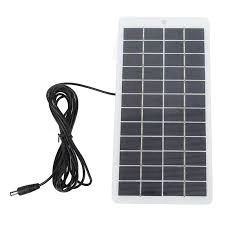Innovative Bifacial Solar Technology for Enhanced Energy Efficiency and Sustainability Solutions
The Advantages and Future of Bifacial Solar Systems
In today’s world, the quest for renewable energy solutions has never been so crucial. As countries and companies alike strive to meet their carbon reduction goals, solar energy stands out as a leading contender. Among the advancements in solar technology, bifacial solar systems have emerged as a game-changing innovation. This article will explore the concept of bifacial solar systems, their advantages, and their potential future in the global energy landscape.
What are Bifacial Solar Systems?
Bifacial solar panels have a unique design that allows them to capture sunlight from both sides of the panel. Unlike traditional monofacial solar panels, which absorb light only from the front, bifacial panels can collect solar energy reflected off surfaces such as the ground or nearby structures. This design maximizes energy capture and efficiency, enabling these systems to produce more energy over their lifespan.
Advantages of Bifacial Solar Systems
1. Increased Energy Production One of the defining advantages of bifacial solar panels is their ability to produce up to 20-30% more energy compared to traditional panels. By capturing light from both sides, they harness reflected sunlight, significantly improving their overall efficiency.
2. Improved Durability and Lifespan Bifacial solar panels are often designed to be more robust and durable. They typically use glass on both sides instead of a back sheet, which makes them less prone to degradation from environmental factors. This increased durability often translates to a longer lifespan, leading to a more favorable return on investment.
3. Lower Levelized Cost of Electricity (LCOE) With increased energy production comes the significant economic benefit of a lower levelized cost of electricity. As electricity production increases, the fixed costs associated with solar installations are spread over a larger amount of generated power, resulting in lower operational costs and better financial returns over time.
bifacial solar system

4. Versatile Installation Options Bifacial solar systems can be installed in various configurations, including ground-mounted systems, rooftops, and floating installations on water bodies. Their design allows for flexibility in deployment, making them adaptable to different environments and site conditions.
5. Environmental Benefits By generating more energy and requiring fewer panels to achieve the same output, bifacial systems contribute to a reduction in the materials needed for solar installations. This decrease in raw material use can result in a lower environmental footprint, aligning with the goals of sustainable development.
The Future of Bifacial Solar Technology
The future for bifacial solar systems looks promising, especially as technological advancements continue to emerge. Leading manufacturers are investing in research and development to further enhance the efficiency of bifacial panels. Innovations such as improved reflective ground materials, better tracking systems, and advanced mounting solutions are all on the horizon.
Moreover, as global demand for clean energy increases, bifacial solar will likely play an integral role in large-scale solar farms. Their ability to yield higher energy outputs can help meet the growing energy needs of urban areas while reducing the reliance on fossil fuels.
Conclusion
In conclusion, bifacial solar systems are at the forefront of solar technology innovation. Their numerous advantages, including increased energy production, durability, and versatility, make them an attractive option for both residential and commercial applications. With ongoing advancements and a growing commitment to renewable energy, bifacial solar systems are poised to become a significant player in the global energy market. As we advance towards a future powered by clean energy, bifacial technology not only represents a step forward in solar efficiency but also in sustainability and environmental responsibility. Embracing such innovations will be crucial in addressing the pressing challenges of climate change and energy demand.
-
Understanding the Advantages of Solar String Inverters for Your Energy SystemNewsApr.29,2025
-
Choosing the Right PV Inverter: A Comprehensive GuideNewsApr.29,2025
-
The Future of Solar Power: Exploring Bifacial Solar PanelsNewsApr.29,2025
-
The Complete Guide to Solar Panels: Efficiency, Cost, And InstallationNewsApr.29,2025
-
The Best Options for Efficiency and Cost-EffectivenessNewsApr.29,2025
-
Harnessing the Power of Off-Grid Solar Inverters for Energy IndependenceNewsApr.29,2025







